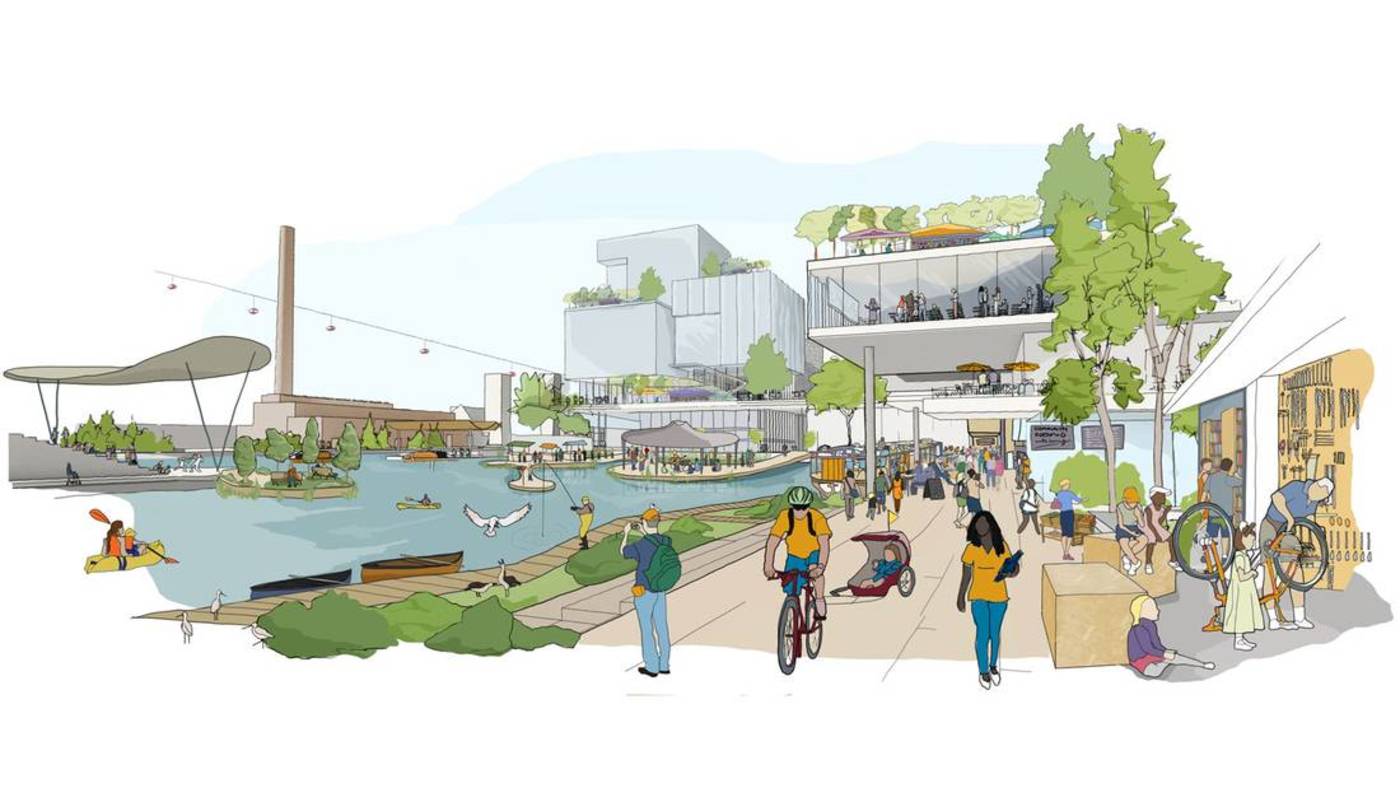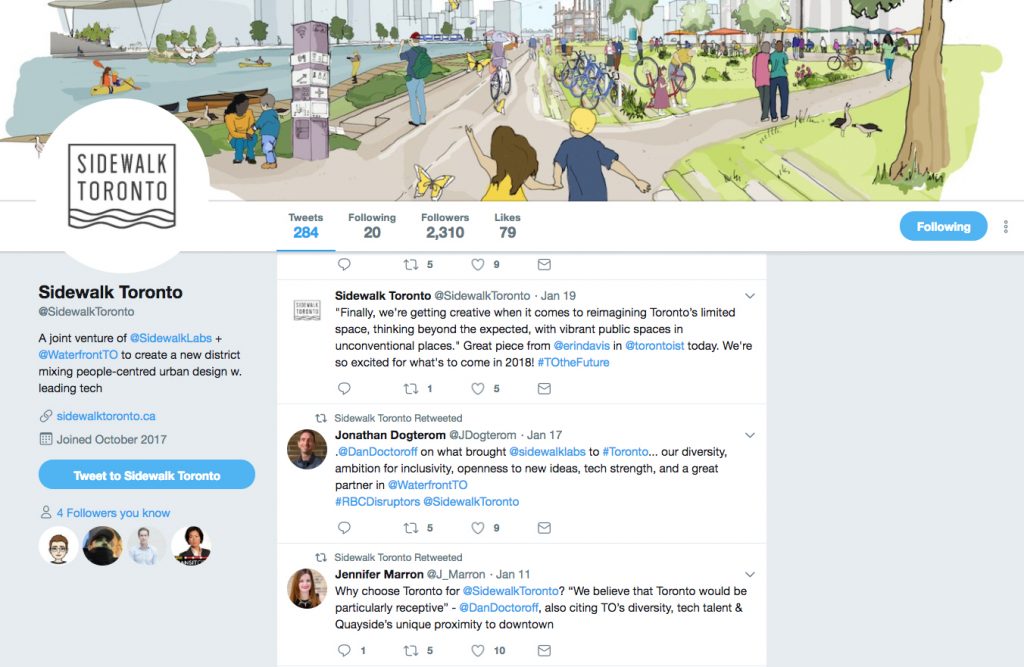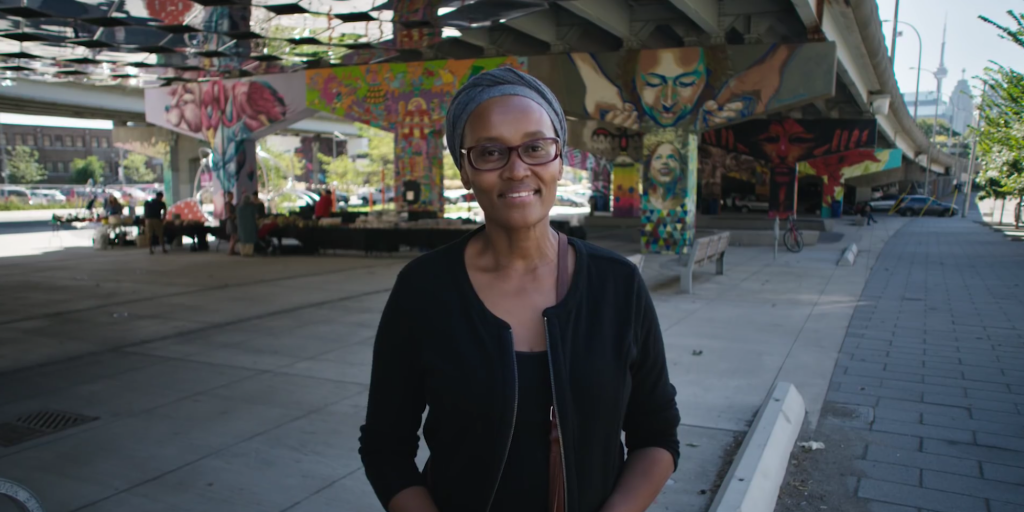Sidewalk Labs: Transparency by Design

The Google company’s early success has been driven by high-quality communications that keep disclosure top-of-mind.
Last October, Alphabet subsidiary Sidewalk Labs won the chance to help develop Quayside, a coveted property on Toronto’s eastern waterfront. Sidewalk’s vision: build a “globally-significant community that will showcase advanced technologies, sustainable practices and innovative business models that demonstrate solutions toward climate positive urban development.” Many Torontonians are giddy about working with one of the world’s most wealthy (there’s already a promise to invest US$50 million in 2018 alone) and innovative companies.
Still, there are concerns. Privacy advocates worry about personal data collection; urbanists worry about community integration; and all of us remain curious as to how Sidewalk plans to make money off this deal. In short, getting long-term buy-in from the people of Toronto will not be easy. Earning legitimate stakeholder confidence requires a tireless commitment to transparency, disclosure and effective communications. And so far, Sidewalk has done a pretty good job.
Below, we’ve listed some notable achievements from Sidewalk’s early (and impressive) outreach campaign.
Robust stakeholder engagement
Upon winning the Quayside bid, Sidewalk CEO Dan Doctoroff explicitly declared to Torontonians that “the neighbourhood of the future starts with your ideas.” In November, Doctoroff and Waterfront Toronto CEO Will Fleissig hosted a community town hall to engage public fervour and field the tough questions. Then, in January, Doctoroff participated in a Reddit AMA to again converse with inquiring minds. With many more town halls and Q&As to come, Sidewalk has taken an encouraging first step in winning over its detractors. Accountability starts at the top, and it’s good that Doctoroff has proudly become the face of this project.

Reddit AMAs are a great way to connect citizen to CEO, in a way that is more structured than ad hoc twitter conversations. The platform lends itself to thoughtful inquiries (and light-hearted responses) and helps connect initiatives and companies to the people driving them, their values and their ideas.
Strong social media presence
Sidewalk understands the value of engaging people across Twitter, Facebook and Instagram (this is a Google sister company, after all). Most impressive is its interaction with local influencers, sharing content from journalists, politicians, urban planners and architects. Sidewalk wants to create a sense of shared ownership over Quayside, and inviting Toronto’s most respected urban thinkers to the conversation is a smart strategy.

Sidewalk’s Twitter feed regularly interacts with some of Toronto’s respected urban thinkers. Leveraging and interacting with influencers is a smart way to expand your reach.
Wholistic website
A good website is the front door to any company’s online identity. And while still new and condensed, Sidewalk has delivered an elegant, readable and interactive Toronto home base that makes the company’s story easy to understand. (It’s not a website built for technocrats and policy wonks – though there’s content for those folks too.) Simple things like having a diverse, citizen-driven video banner and opting for a .ca top-level domain demonstrate Sidewalk’s desire to touch regular Torontonians.

The video that functions as a welcome banner on the Sidewalk Labs website reflects the diversity of Toronto’s people and spaces.
Easy-to-access disclosure
And while we’re on the subject, it’s important to highlight the website’s Documents section. Files here include Sidewalk’s submission to Waterfront Toronto, the company’s “Approach to Privacy,” and a “Feedback Report” on the aforementioned town hall. Sidewalk, seemingly, is not trying to hide its intentions. It is aware of stakeholders’ most significant concerns. A continued publication of similar documents will further the company’s standing in the hearts and minds of stakeholders.
Taking it to the next level
Having said all that, here’s a list of ideas that we’d love to see in Sidewalk’s future communications strategy:
- As it stands, the Toronto website is just one page – it’s mobile friendly, but a project as large as Quayside will eventually require something more substantial.
- Much of Sidewalk’s content is still buried in its RFP submission, a large and static PDF. We’ll be looking for Sidewalk to transfer some of this great information into a more engaging medium.
- An interactive map of the planned neighbourhood would be very cool – perhaps leveraging Google’s Earth, Maps and Street View technologies – or even functionality that enables citizens to annotate their ideas for the future.
- A timeline showing near-term events (consultation) and long-term goals (permits) would demonstrate accountability while also communicating the scope and scale of the project.
- Sidewalk’s stated objectives are somewhat lofty and a bit abstract. We’re excited to see formal strategies and tactics emerge that are attached to those objectives, so that progress can be measured over time. As a framework, the Six Capitals comes to mind.
The opportunity at Quayside is groundbreaking; a pilot project for future neighbourhoods of the future. What Sidewalk ends up building could become the new standard for urban development. Needless to say, we’re hooked. And we’re watching with great interest.




